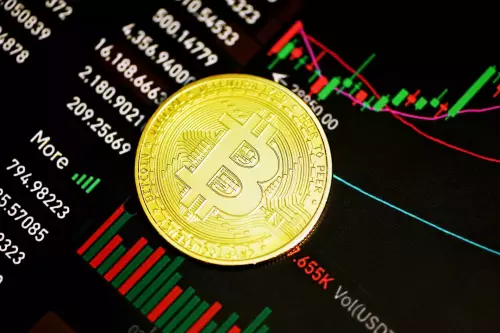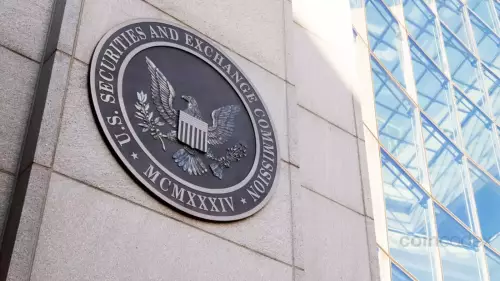 |
|
 |
|
 |
|
 |
|
 |
|
 |
|
 |
|
 |
|
 |
|
 |
|
 |
|
 |
|
 |
|
 |
|
 |
|
Cryptocurrency News Articles
RWA, Stablecoin Liquidity, and Everything That Went Right for Arbitrum In 2024
Dec 21, 2024 at 07:38 am
Arbitrum's stablecoin market cap significantly increased this year, thanks to the enabling environment the blockchain provides.

The Arbitrum (ARB) ecosystem had a stellar 2024, despite the bear market at the beginning of the year. While ARB suffered price-wise like many altcoins due to diminishing risk appetite, 2024 still ended up being a win for the Arbitrum ecosystem.
Here’s a summary of some key achievements and highlights for Arbitrum in 2024:
– Arbitrum became the third-largest blockchain by stablecoin capitalization.
– Arbitrum achieved over $100 million in Real World Assets (RWA) tokenization.
Let’s dive deeper into these achievements and explore their significance for Arbitrum.
Arbitrum’s stablecoin market cap increased significantly this year, thanks to the enabling environment the blockchain provides. According to reports, Arbitrum added almost $1 billion to its stablecoin market cap between November and this month, positioning it ahead of blockchains like Binance Smart Chain and Solana.
As of December 20, Arbitrum has a stablecoin market cap of approximately $6.75 billion and is on track to surpass $7 billion in total value locked. When stablecoin market cap grows on a blockchain as it has on Arbitrum, it typically signals liquidity stacking ahead of activity on the network.
There was also a noticeable uptick in the tokenization of RWAs on Arbitrum. At the start of this year, it had less than $100k in tokenized assets, but that stat has steadily grown to around $85 million as of mid-December.
Major contributors to this growth include major asset managers like Franklin Templeton and BlackRock, who deployed tokenized Money Market Funds on the platform. 99% of these tokenized assets are US Treasuries, which is unsurprising as tokenized equities and equity indices have always been a niche sector, with a combined AUM of merely $800k. Investors can access stocks and indices on Arbitrum, such as SPY, TSLA, AAPL, NVDA, and COIN.
While a majority of those assets are held by externally-owned accounts, the Arbitrum DAO treasury holds 18.4% of the chain’s RWAs, and 10.1% reside in DEX liquidity pools. Why is the Arbitrum DAO holding so much in RWAs? The goal is to create an alternative revenue stream with a different risk profile than ETH and ARB.
Arbitrum’s ecosystem recorded significant growth across various parameters. The network’s TVL (Total Value Locked) hit $20 billion, proof of its capacity to scale and innovate. This is thanks to developments like the support for USDC as a gas token for Orbit chains, which facilitated broader adoption and new use cases for onboarding retailers into Web3.
Another area that made Arbitrum more enticing to whales is its profitability for liquidity providers. It attracted more users and devs thanks to its shorter block times, which many have lauded.
As it stands, Arbitrum One boasts an average block time of 250 milliseconds. However, with Arbitrum Orbit, block times can be configured to go as low as 100 milliseconds if transactions arrive that quickly.
The efficiency contributed immensely to the competitive edge the blockchain now has over other blockchains, including Ethereum, which has an average block time of around 12 seconds.
Arbitrum stuck around during the bear market, and unsurprisingly, the ecosystem’s community and developer activity have rewarded it with their support.
Showcases of its active user base include surpassing a billion transactions on Arbitrum One and the 1 million Stylus NFTs mint milestone. Despite the already strong RWA growth on the chain this year, there’s still significant room for expansion.
As it stands, 99% of RWAs on Arbitrum are US Treasuries, which means other industries like real estate are yet to be represented and could be the next in line.
Real estate can offer higher yields and tangible value. There has always been global demand for premium properties, which makes it an untapped market with massive potential. Arbitrum’s low fees and scalability make it the ideal ecosystem for RWAs in crypto, and if it intersects with other use cases, it could be set for another great year in 202
Disclaimer:info@kdj.com
The information provided is not trading advice. kdj.com does not assume any responsibility for any investments made based on the information provided in this article. Cryptocurrencies are highly volatile and it is highly recommended that you invest with caution after thorough research!
If you believe that the content used on this website infringes your copyright, please contact us immediately (info@kdj.com) and we will delete it promptly.






























































